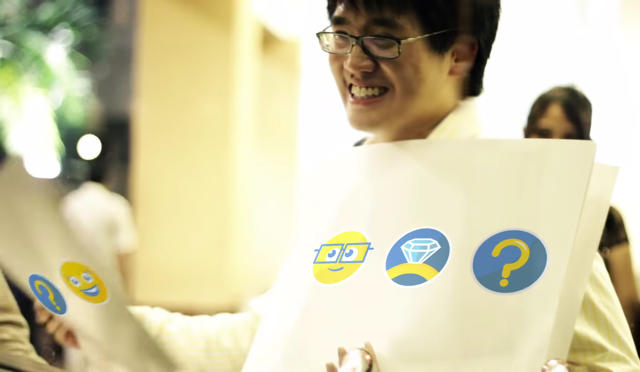Sometimes when communicating non-verbally, like over text, the right words to express your true emotions fail you. There are times when only a smiling little pile of poo will do. Thankfully, there are emoji, those colorful little symbols that, in a single image, express everything from delight to fear to disgust to dizzying love—not to mention whatever mischievous emotion prompts people to include a little poop in their message.
With roots in Japan, emoji have tipped over into the mainstream and have become an important, and amusing, part of the digital lexicon. Studies have looked at emoji preferences around the world (Canada tops the world in poop usage, which sets my patriotic flames alight), brands have created campaigns using the characters, and even the White House is down with using tiny pictures to convey its message. Emoji have become so popular July 17 has been declared World Emoji Day.
Not one to miss out on a cultural moment, Pepsi has created an entire program around emoji, which will be released globally on World Emoji Day. The brand is releasing a 35-character emoji keyboard, which is designed to evoke the Pepsi logo as well as fill gaps in the emoji lexicon; a short film, which tells an endearing and universal story with images to show how emoji can exist outside of the digital space; and is calling on fans to suggest new emoji by tweeting their ideas at #PepsiMoji.
"Over time emoji have become the universally understood language of emotion," says Brad Jakeman, President, PepsiCo Global Beverage Group. "The unique thing we’re doing with emojis is taking them out of the digital world and grounding them in the physical world and allowing consumers to have the kinds of conversations they’d have with emojis when they’re actually together."

While "Proposal" demonstrates the physical use of digital icons, the PepsiMoji have been literally translated to the real world in Canada where they can be seen on cans and bottles as part of Pepsi’s #SayItWithPepsi promotion.
Jakeman says when taken at face value #Sayitwithpepsi is a celebration of emojis, which ties into what World Emoji Day is all about. But launching this program in Canada has other strategic benefits. Aside from having a high penetration of mobile usage, he cites statistics that suggest Canadians are also emoji-crazy: nearly 71% of Canadian consumers use emojis every day and 45% of Canadian consumers have installed an emoji keyboard on their phones, says Jakeman. Plus, Canada is multilingual.
"As we think about how to scale this program, Canada is one of the few nations where it has more that one official language so this is a place we can really test the global appeal of emojis as an universal language of emotions that transcends linguistic barriers," Jakeman says.
This campaign is not Pepsi’s first emoji-based initiative. In March, the brand enlisted artist Yung Jake to create portraits of its Pepsi ambassadors—such as Usher, Serena Williams and Usain Bolt—out of emoji. But Jakeman says this global day dedicated to the icons was the right time to put a Pepsi spin on the visual language.
"Emojis have been around for quite some time and we spent a lot of time talking about "why now?" Jakeman says. "One of the things that Pepsi has been historically adept at, is figuring out when something is right at the appropriate moment in the consumer zeitgeist. The fact that World Emoji Day is for the first time becoming this broad phenomenon that it’s expected to be just shows you how we believe we got the timing right."

No comments:
Post a Comment